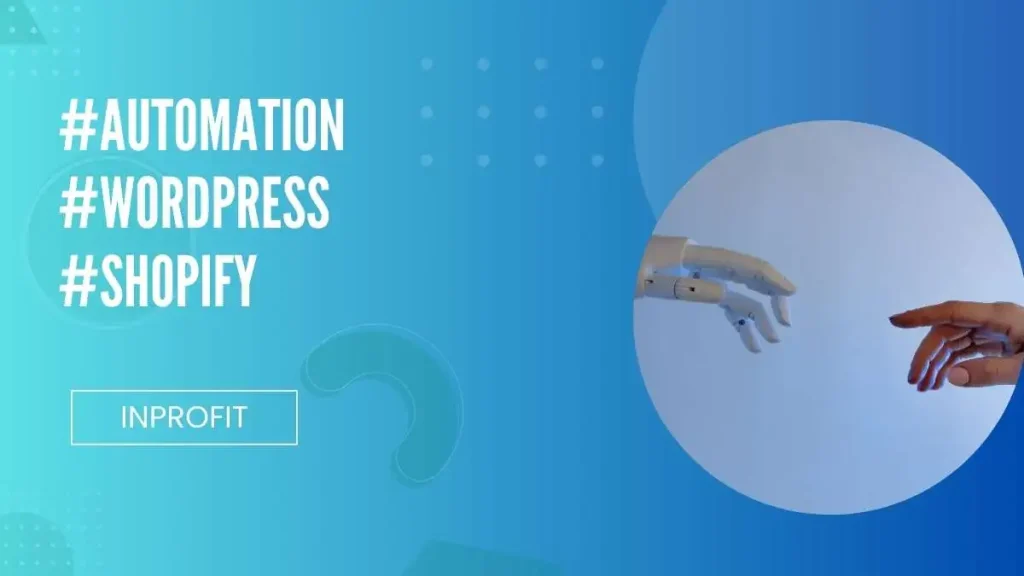Websites are no longer just static storefronts; they are now intelligent entities that interact, learn and adapt to user needs in real time. This transformation is driven by advances in artificial intelligence, automation and a focus on user experience.
The age of the Autonomous Web: What is it and why does it matter?
Autonomous websites are not science fiction. We are referring to websites that can operate, update and optimize themselves with minimal human intervention. Imagine a website that analyzes each visitor and decides what to show them, adapts its loading speed according to the device, updates its content according to search trends, and automatically responds to frequent queries.
This is achieved through the integration of technologies such as process automation, artificial intelligence, and the use of advanced CMS platforms such as WordPress and Shopify.
Intelligent Web Design
We no longer design “pretty” websites. Now we design websites that sell, retain and scale. Aesthetics are at the service of strategy. Before choosing a color palette, we analyze the heat maps, click behavior and navigation flow of real users. This makes it possible to create structures that guide the user towards specific goals, such as subscription, contact or purchase.
Predictive information architecture
Thanks to automated analytics, today’s websites can continuously learn about their users. This capability translates into a navigation architecture that changes over time, adapting to what the target audience is really looking for. It’ s not just UX; it’s business intelligence applied to design.
1. Hyper-personalized Experiences Based on AI and Machine Learning.
Hyperpersonalization has evolved from simple basic recommendations to advanced machine learning and natural language processing (NLP) systems that analyze user behavior in real time. Platforms such as Google Optimize and Adobe Target use predictive algorithms to dynamically adjust content, offers and even interfaces based on browsing history, geographic location and interaction patterns.
This not only optimizes conversion rate (CRO) by delivering highly targeted messages, but also improves user retention through personalized onboarding strategies. McKinsey studies reveal that companies that implement advanced personalization achieve a 10-15% increase in revenue over competitors with generic approaches.
2. Functional Minimalism: UX Focused on Cognitive Efficiency
Minimalism in web design has transcended aesthetics to become a methodology based on heuristic usability principles. Each component -from visual hierarchy to white space- is governed by Hick’s law (fewer options = less cognitive load) and the Pareto paradigm (80% results with 20% key elements).
Frameworks such as Atomic Design systematize this approach, prioritizing modular components that maximize interactive efficiency. Examples such as
3. Dark and Light Modes: Visual Ergonomics and Energy Sustainability
The implementation of dynamic color schemes (dark/light mode) responds to WCAG 2.1 accessibility standards, guaranteeing a minimum contrast of 4.5:1 for legibility. Technologically, it is integrated through CSS prefers-color-scheme and APIs such as iOS Dark Mode, allowing synchronization with the user’s operating system.
Beyond visual comfort, MIT Media Lab studies confirm that dark mode reduces power consumption in OLED devices by up to 60%. It also reduces eye fatigue in low-light environments, based on flicker rate and blue light emission metrics.
4. Animations and Microinteractions: Psychology of Feedback and Digital Affordance
Microinteractions -from hover effects to SVG transitions- operate under Gestalt psychology principles, reinforcing the cause-effect relationship. Tools such as Framer Motion and GSAP allow the implementation of spring physics-based animations to simulate mechanical realism.
These elements are not merely decorative: they serve critical functions in the information architecture:
- Tactile feedback: Success/error notifications via UI status variables.
- Wayfinding: Visual guidance through path animations in complex flows (e.g. checkouts).
- Affordance: Interactive signals such as buttons that change color when pressed(Fitts’ Law).
Data from Google Material Design indicates that interfaces with well-designed microinteractions reduce perceived latency by 25%, improving user satisfaction (CSAT).
Web Process Automation Are there any limits?
Web automation is no longer limited to programming emails. Automation is synonymous with efficiency, intelligence and scalability. From bots that rank leads to platforms that generate SEO content based on trends, manual processes are being left behind.
Digital marketing automation
Email campaigns, remarketing, lead nurturing and social media management are more connected than ever. Platforms such as ActiveCampaign or HubSpot allow you to create personalized workflows that react to user behavior in real time. For example, if a user adds a product to the cart but does not complete the purchase, the system can send a reminder with a personalized offer 2 hours later. All without human intervention.
Automation in ecommerce
In Shopify, you can automate post-sales emails, inventory updates, abandoned cart management, VIP customer segmentation and even landing page design. The key is that everything works as a synchronized chain, with each gear connected to user behavior information.
Marketing Automation
Automation tools allow you to manage marketing campaigns efficiently, including sending personalized emails, segmenting audiences and scheduling social media posts.
Content management
AI facilitates the publication and updating of content on the website, ensuring that information is always up-to-date and relevant to users.
3. Analysis and Reporting
Automated platforms collect data on user behavior, generating reports that help make informed decisions to optimize site and marketing strategies.

WordPress and Shopify: Platforms for Autonomy
WordPress
WordPress remains a popular platform for website creation due to its flexibility and wide range of plugins. The integration of automation and SEO tools is simple, allowing you to optimize site performance.
Shopify
Shopify is ideal for online stores, offering modern themes and integrated functionality for product and order management. Automation in Shopify helps improve operational efficiency and customer experience.
Practical tips for freelance web sites
- Implement advanced Chatbots: Use AI-powered chatbots to provide 24/7 customer support, resolve common queries and guide users through the buying process.
- Optimize loading speed: Make sure your website loads quickly by using techniques such as image compression, CDN use and minimizing CSS and JavaScript files.
- Adopt a responsive design: Ensure that your website looks and functions correctly on all devices, from desktop computers to smartphones and tablets.
- Use analytics tools: Implement tools such as Google Analytics to monitor user behavior and make informed decisions based on real data.
- Regularly update your content: Keep your website updated with fresh and relevant content to improve SEO and keep visitors interested.
Web Automation Agency
Web design and process automation in 2025 has reached a level of sophistication that allows businesses to deliver personalized, efficient and scalable experiences. By leveraging the capabilities of platforms like WordPress and Shopify, along with the latest trends in design and automation, it is possible to create standalone websites that not only engage users, but also drive business growth.
Strategies based on hyper-personalization, functional minimalism, responsive design and micro-interactions are no longer optional, but key requirements to stand out. Implementing these technologies – backed by AI, machine learning and scientific UX principles – not only improves the user experience, but also drives conversions, reduces bounce rates and optimizes technical performance.
However, mastering these innovations requires technical expertise and specialized knowledge. From integrating predictive algorithms to designing zero-friction interfaces, every detail must be executed with precision to ensure tangible results.
Ready to take your website to the next level?
A digital marketing agency specialized in automation and new technologies can help you:
- Implement real-time personalization systems with AI.
- Design ultra-efficient interfaces based on data and behavioral analytics.
- Optimize performance with adaptive modes and strategic animations.
- Turn your site into an automated lead generation tool.
Don’t leave your competitive advantage to chance. Contact us today to develop a smart, adaptable, high-performing website designed to attract, retain and convert.



